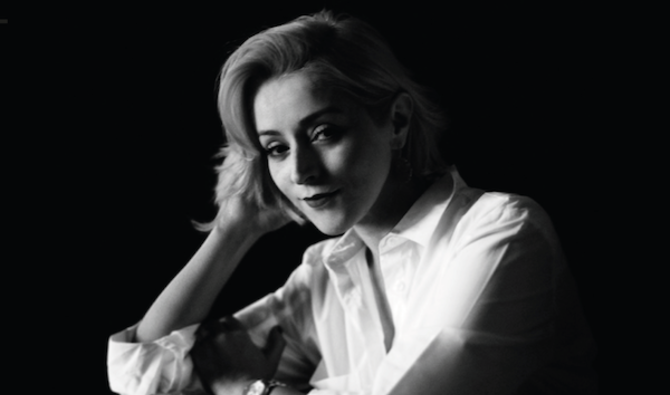BEIRUT: The ME hotel in Dubai, designed inside and out by the late British-Iraqi architect Zaha Hadid, the woman who rounded out the corners drawn by men, is staging a curated art exhibition entirely dedicated to female artists.
ME Dubai has partnered with MIA Art Collection, and Arab News and its international editions to bring the collective “Sense of Women,” which will take place from March 28 to April 20 and highlight the creative work of the women.
Arab News has taken a look behind the scenes at the exceptional exhibition and the artists who will be presented there.
Alejandra Castro Rioseco, patronage on a myriad of fronts
At the heart of this project is Chilean patron Alejandra Castro Rioseco, a civil engineer, art collector, and director of the MIA Art Collection.
It brings together works from her own collection of nearly 900 items, the world’s largest private catalogue of all-female pieces.
It was her passion for women’s art that prompted Rioseco to embark on many philanthropic projects, including the creation of the virtual museum MIA Anywhere dedicated to women artists and the awarding of art scholarships, two initiatives that pushed her to travel the world, actively participating in contemporary art fairs in search of new talents.

The exhibition will open with the installation “Breathe” featuring porcelain gas masks donned with intricate handmade work consisting of porcelain roses, created before the COVID-19 pandemic, acting on a curious foreboding, by the emerging Spanish artist Noemi Iglesias Barrios. (Supplied)
As part of her endeavor to promote women’s art, Rioseco also launched the Mujer Opina foundation for the empowerment of women and the preservation of indigenous know-how and languages, notably through the “Ultimate Women” project dedicated to the ancient Mapuche culture.
Rioseco served for five years on the board of El-Museo del Barrio in New York. She now sits on the Latin American Art Acquisition Committee for the New York Guggenheim and the Abu Dhabi-based Guggenheim Middle East Committee, for the third year running.
She is also involved in the musical sector, being the first Chilean woman elected to the board of directors of the International Federation of Chopin Societies in Warsaw, as well as in the dance industry, serving at the prestigious international ballet, Jose Limon.

Aisha Al-Ahmadi. (Supplied)
‘Living in Dubai is like living in New York in the 1950s’
On what motivated her to leave civil engineering for philanthropy, contemporary art, and action for women’s empowerment, Rioseco said that, despite having worked in the field of engineering, she had been drawn to charity work since childhood, and revolted against social inequalities.
As for juggling so many activities at the same time, she noted that her secret to “being happy” was her love for what she did and the thrill of waking every morning to a new landscape of discovery.
She also enjoyed the support of her family, especially her daughter, a high school student, who works with her outside of school time.
Mostly based in Dubai, she said: “Dubai has become my favorite place. I think those of us who can live here are really lucky, not only for everything that is happening there, but also for observing and being part of the great changes of our time.
“Living in Dubai is like living in New York in the 1950s. You can witness everything here. An entire empire was built in record time, despite the obstacles posed by nature, with cutting-edge technology and the support of a government concerned with the safety and well-being of all of its constituents. There is a lot to learn from Dubai.”

The large hall of the ME hotel designed by architect Zaha Hadid. (Supplied)
Contemporary answers for anxious spectators
Rioseco pointed out that the main theme of the “Sense of Women” exhibition was “the ability of women to adapt to the present and to the tools and technologies of our time.
“Apart from their beauty, these works convey messages: Respect for the environment, human relations, and of course the courage that must be found to live each day.

Liubov Kolbina. (Supplied)
“These women artists, from different countries and different artistic and cultural manifestations, have the same aim, and the success of each one affects all of us,” she added.
Their common quest was to create a balance between the woman within them and the artist, and the pressure of technology that drove them to seek new channels to communicate with the contemporary viewer, Rioseco said.

Fatima Al-Kindi. (Supplied)
Materials, techniques, dreams, and perceptions
The exhibition will open with the installation “Breathe” featuring porcelain gas masks donned with intricate handmade work consisting of porcelain roses, created before the coronavirus disease (COVID-19) pandemic, acting on a curious foreboding, by the emerging Spanish artist Noemi Iglesias Barrios.
These porcelain installations are dedicated to the victims of the pandemic. Along the way, visitors will discover the works of Englishwoman Patricia Millns, who questions rhythm through textiles, as well as the work of Aisha Al-Ahmadi, a multidisciplinary artist born in Abu Dhabi, whose work is centered around themes of identity politics.

Ana Daganzo. (Supplied)
Through her photographs, Ana Daganzo, a Spanish visual artist, explores a vision that focuses on the particularities of the eye as an instrument, and the phenomena caused by it.
Equally captivating are the photos of Spaniard Veronica Ruth Frias who places herself at the center of her work.
The exhibition will also introduce the dreamlike and disturbing world of Japanese painter Mari Ito, as well as the expressionist art of her compatriot Akiko Nakayama.
The strange landscapes of the Siberia-born Russian Liubov Kolbina and the vast abstract canvases of the Emirati painter Fatima Al-Kindi, which endeavors to transfigure the trivial, are some of the highlights of the exhibition.

Pic 7: The large hall of the ME hotel designed by architect Zaha Hadid. (Supplied)







0 التعليقات:
إرسال تعليق